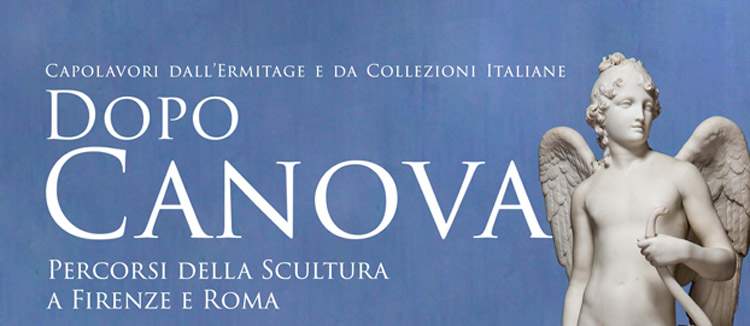After Canova: an exhibition in Carrara on the paths of neoclassicism and purism
An exhibition to investigate the evolutions of neoclassicism and the birth of purism between Rome and Florence after the experience of Antonio Canova: it is entitled After Canova. Paths of Sculpture in Florence and Rome and opens to the public in Carrara, at Palazzo Cucchiari, on July 8 (it will run until Oct. 22). The exhibition, curated by Sergej Androsov, Massimo Bertozzi and Ettore Spalletti, intends to illustrate two fundamental moments in the renewal of sculpture after Canova: on the one hand, the research of sculptors from the Roman area who continued in the groove of neoclassicism traced by both Canova and Berthel Thorvaldsen, and on the other, the path of purism that had Lorenzo Bartolini as its main exponent. Canova, Thorvaldsen and Bartolini will all be featured in the exhibition with their works.
“For the occasion,” the presentation reads, “the rooms of the nineteenth-century Palazzo Cucchiari, home of the Giorgio Conti Foundation, which has been producing and promoting exhibitions dedicated to the nineteenth century and contemporary artists since 2015, will host some 30 sculptures, from the Hermitage Museum in St. Petersburg and from Italian public and private collections. From Canova to Duprè, passing through Berthel Thorvaldsen and Lorenzo Bartolini, the works in the exhibition constitute an exemplary journey from the difficult construction of a new figurative language in the transition from the Empire to the Restoration, to the mid-19th century.”
Alongside the names of the main protagonists are those of many artists who, heirs or collaborators of the greatest innovators, carried on their instances, often achieving significant results in terms of originality and autonomy. In the exhibition, therefore, it will be possible to admire the works of artists who continued in the wake of Canova (Carlo Finelli, Rinaldo Rinaldi) or in that of Thorvaldsen (Luigi Bienaimé), or who adhered to the purist dictate (such as Pietro Tenerani, who was first a pupil of Thorvaldsen, or such as Luigi Pampaloni, Giovanni Duprè, Pio Fedi, Tito Sarrocchi, and Aristodemo Costoli).
Among the works that will be featured in the exhibition are three sculptures by Canova (the Portrait of Napoleon andWinged Love both from the Hermitage, and the model of the Funeral Monument to Vittorio Alfieri), Lorenzo Bartolini’sAmmostatore , which comes from the Hermitage as well as well as Pasquale Romanelli’s Raphael and the Fornarina , and also Pio Fedi’s Nello con la Pia (from the Galleria d’Arte Moderna in Florence), Giovanni Duprè’s Abandoned Sappho from the National Gallery of Modern and Contemporary Art in Rome, and Carlo Finelli’s Three Graces from the Antonacci Foundation in Rome.
The exhibition, organized by the Giorgio Conti Foundation in collaboration with the Hermitage in St. Petersburg, the Province of Massa and Carrara, the Academy of Fine Arts of Carrara, the Municipality of Montignoso, the Antonacci Foundation, the National Gallery of Modern and Contemporary Art in Rome, Monte dei Paschi di Siena, and the Opera della Metropolitana di Siena, has the patronage of the Rotary Club of Carrara and Massa and the sponsorship of Red Graniti. Finestre Sull’Arte is an official media partner of the exhibition. Open: Tuesday, Wednesday, Thursday and Sunday from 10 a.m. to noon and 5 to 10 p.m., Friday and Saturday from 10 a.m. to noon and 5 to 11:30 p.m. Info on the exhibition website.
 |
| After Canova: an exhibition in Carrara on the paths of neoclassicism and purism |
Warning: the translation into English of the original Italian article was created using automatic tools. We undertake to review all articles, but we do not guarantee the total absence of inaccuracies in the translation due to the program. You can find the original by clicking on the ITA button. If you find any mistake,please contact us.





























